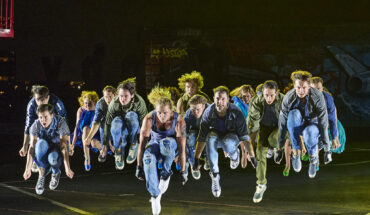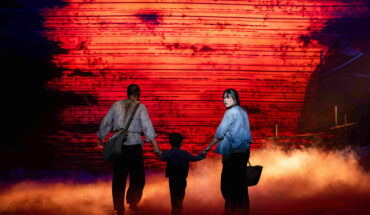The opening night standing ovation says it all. Opera Australia’s musically and dramatically emotive production of La Traviata is a triumph.
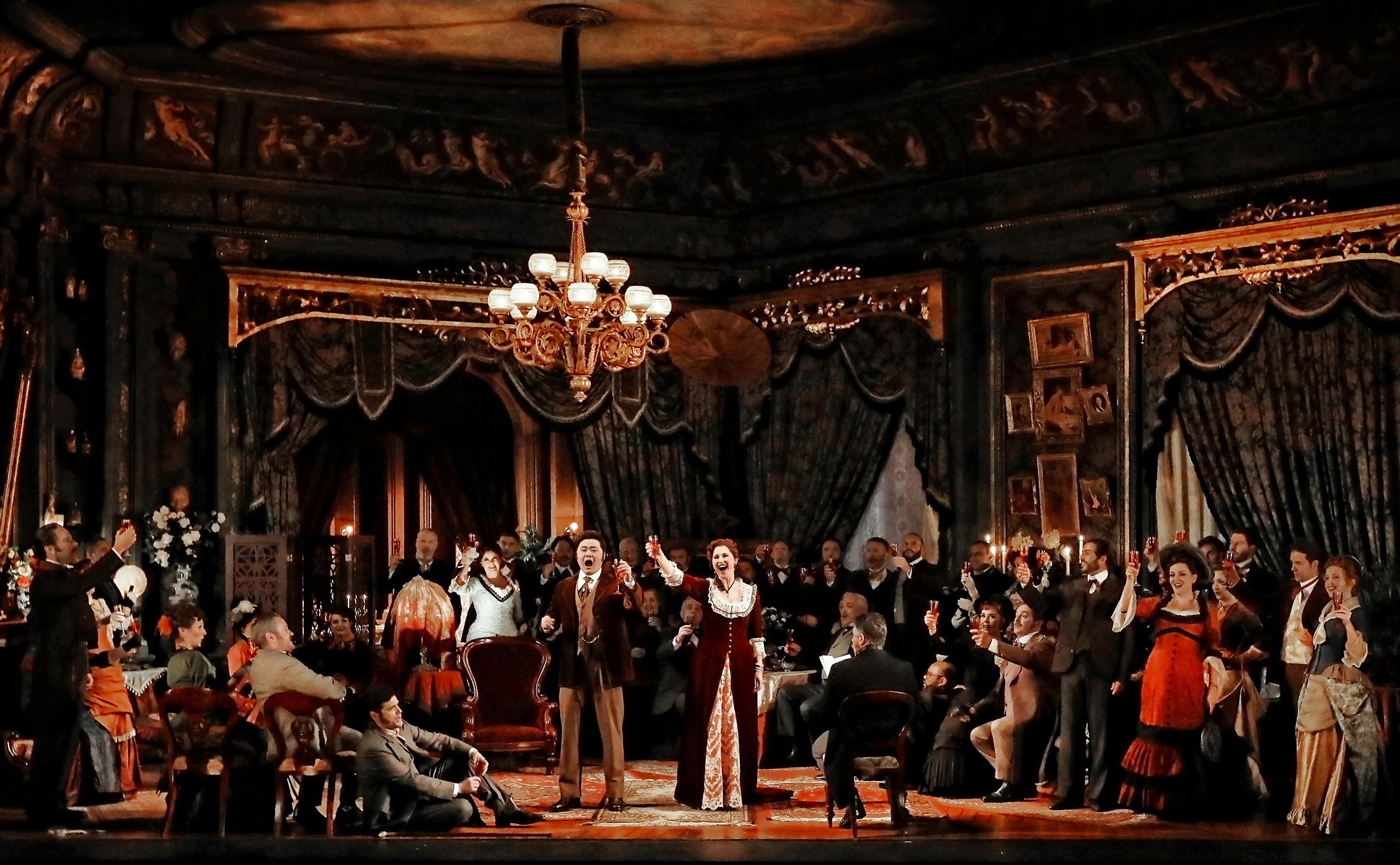
The quintessential Italian opera composer Giuseppe Verdi wrote La Traviata (‘The Fallen Woman’) together with librettist Francesco Piave in 1853. What has been described as ‘the perfect tragedy’ is based on a play by French writer Alexandre Dumas, best known for his novels The Count of Monte Cristo and The Three Musketeers. The action follows Violetta, a beautiful, carefree Parisian courtesan who gives up her life of freedom, pleasure and luxury for true love, only to succumb to illness and lose all in a sequence of tragic turns.
The courtesan was a fashionable but confronting figure in 19th century literature and theatre. Charming, intelligent, educated, refined and musical, she could successfully mingle in polite society, but was notorious for ruining the reputations and fortunes of honourable men and their families. On top of this, consumption, or tuberculosis, was a subject of fascination for Verdi’s contemporary audience, with much mythology surrounding the disease and it’s supposed link to deprivation and sexual excess.
The prototype of the fallen heroine is just as prominent in today’s popular culture. In fact, La Traviata has directly inspired various blockbuster films, including Moulin Rouge and Pretty Woman. Whether one reads this as an indication that middle class morality has not changed all that much in the last 160 years is a matter of private interpretation. It could appear that the audience is being dictated a lesson: that women must be feminine and vulnerable, and that sensual or independent women must ultimately pay through sacrifice and suffering. However, that reading would be of the plot alone, discounting the story told through Verdi’s music.
Verdi wrote that his aim was to introduce provocative ideas and to create music capable of expressing the human soul. He certainly realised this in La Traviata, communicating on a plane beyond words the emotional world of Violetta, and thus creating a very real, very human character.
Despite the fact that the opening act lets us into Violetta’s conspicuous life as a kept woman, brazenly dripping in wealth she did not earn, toasting to hedonism in the famous ‘Brindisi’ (Drinking Chorus) and dismissing love as folly in ‘Sempre Libera’ (Forever Free), we somehow do not judge her as a narcissist and instead are inclined to like her and root for her. This is largely due to the gorgeous Prelude the orchestra plays before curtain rise. The Prelude is basically a musical portrait of Violetta, mapping her decline in reverse. The sad opening of tender, delicate violins in high register is romantic, piteous and poignant, hinting at her illness and preparing us for her coming suffering and despair. The themes introduced in the Prelude return throughout the succeeding acts, characterising her as passionate but hopelessly fragile and ultimately noble. The music manipulates us into comprehending her plight and deeply sympathising with her.
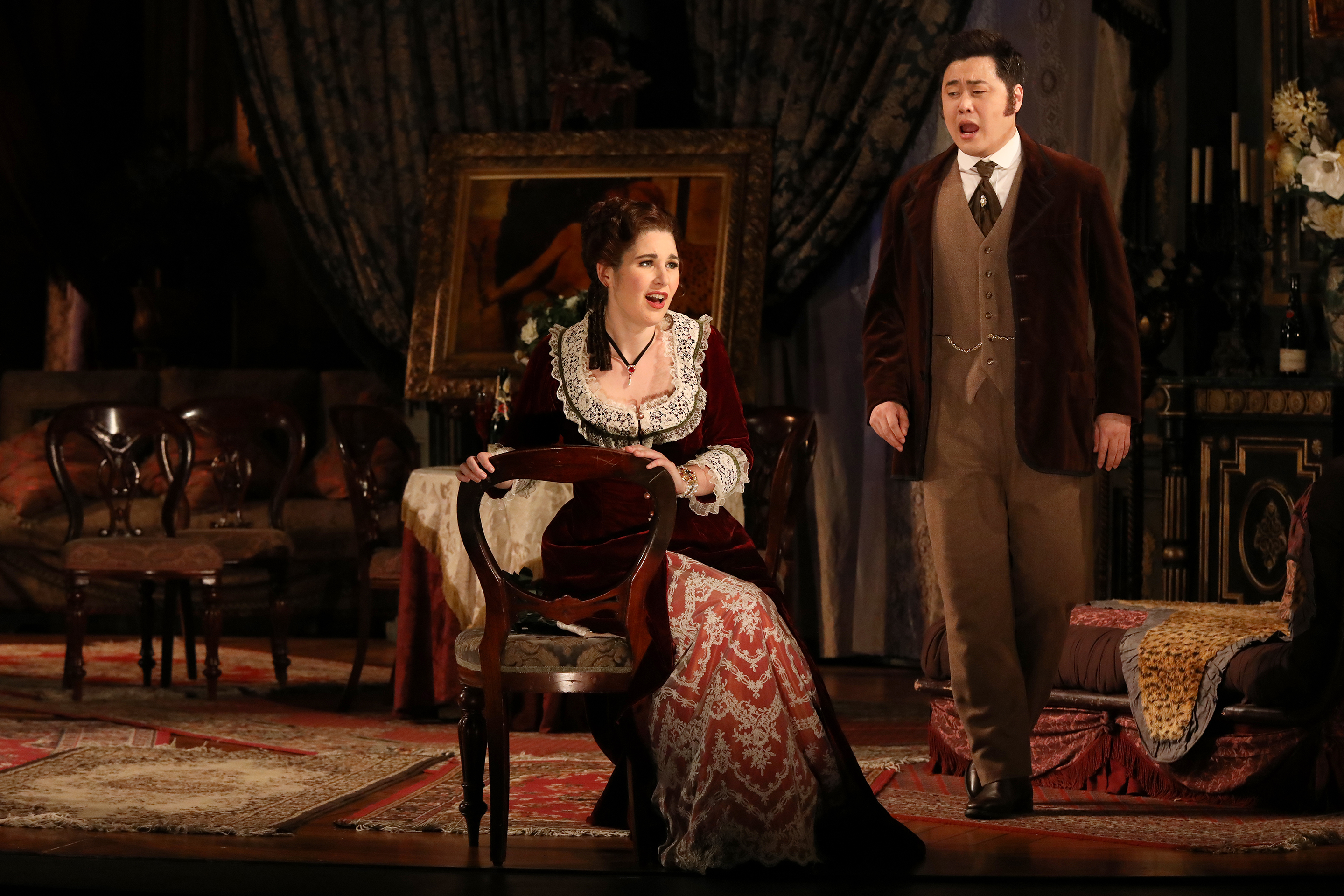
When you know a little of the history, it is no wonder why Violetta’s character is so lovingly saved. Verdi was at the time of composing living with a woman he was not married to – a real scandal back then. He obviously had a soft spot for a fallen woman. Moreover, five years earlier, Dumas used to enjoy the company of a real live Parisian courtesan who died of tuberculosis at age 23, leaving him in mourning but with plenty of literary fodder.
The role of Violetta is perhaps the most demanding in all operatic repertory. In this production, Violetta is played by Australian soprano Nicole Car, who has been described as ‘the next Dame Joan Sutherland’. Car looks to be set to become one of the great Violettas of our age. The incredibly high pitched and quick paced coloratura of the aria ‘Sempre Libera’ requires a level of skill not every soprano has. Car manages these florid passages with ease, injecting a sense of flirty fun which lifts it from being purely for display purposes into being a legitimate and effective part of the lyrical and dramatic body, expressing her coquettish nature.

In contrast to this bubbly and technical ornamental singing, the duets with Violetta’s lover Alfredo and also with his father Germont are expressively melodic and deeply moving. In the final scene, Car sings her aria with nuanced sadness and subtle, almost imperceptible, flickers of hope. Surprisingly, before collapsing on the floor in weakness, she pelts out a high, strongly accented fortissimo, almost a scream, rather than vanishing away with a whimper. It is a stirring moment, showing her strength and resolve. Car is truly an outstanding actor and singer, with both highly refined vocal and dramatic perception. Her resounding success as Violetta will surely launch the already celebrated soprano into even greater stardom than she has heretofore known.
Korean born Ji-Min Park plays a believable Alfredo, all adoring and adorable. With his powerful tenor, he opens the show with the crowd favourite drinking song and does not disappoint. In his duets with Car his tone is clear and strong, conflicted with torment and delight. He even impressively reaches a high C, the holy grail for tenors, at the top of their vocal range, and holds it with full voice.
Ukrainian born Vitaliy Bilyy wins cheers and whistles from the audience for his portrayal of Alfredo’s father. Germont is a firm, dark patriarchal character, incarnating the law and family honour, hence Bilyy’s barrel-chested baritone is ideal. Although the role has limited opportunities for vocal showcasing, Bilyy does not fail to appreciate and achieve its’ dramatic possibilities. Germont makes a grave error with heavy consequences, yet he is redeemed by virtue of his eventual remorse and the fact of his having been motivated by paternal devotion. Bilyy traces with psychological honesty the gradual growth of Germont’s respect and sympathy for the woman he initially despises. His long duet with Violetta, especially as he sings ‘Piangi, piangi’ (Weep, weep), is moving, as is his obvious grief at the end.
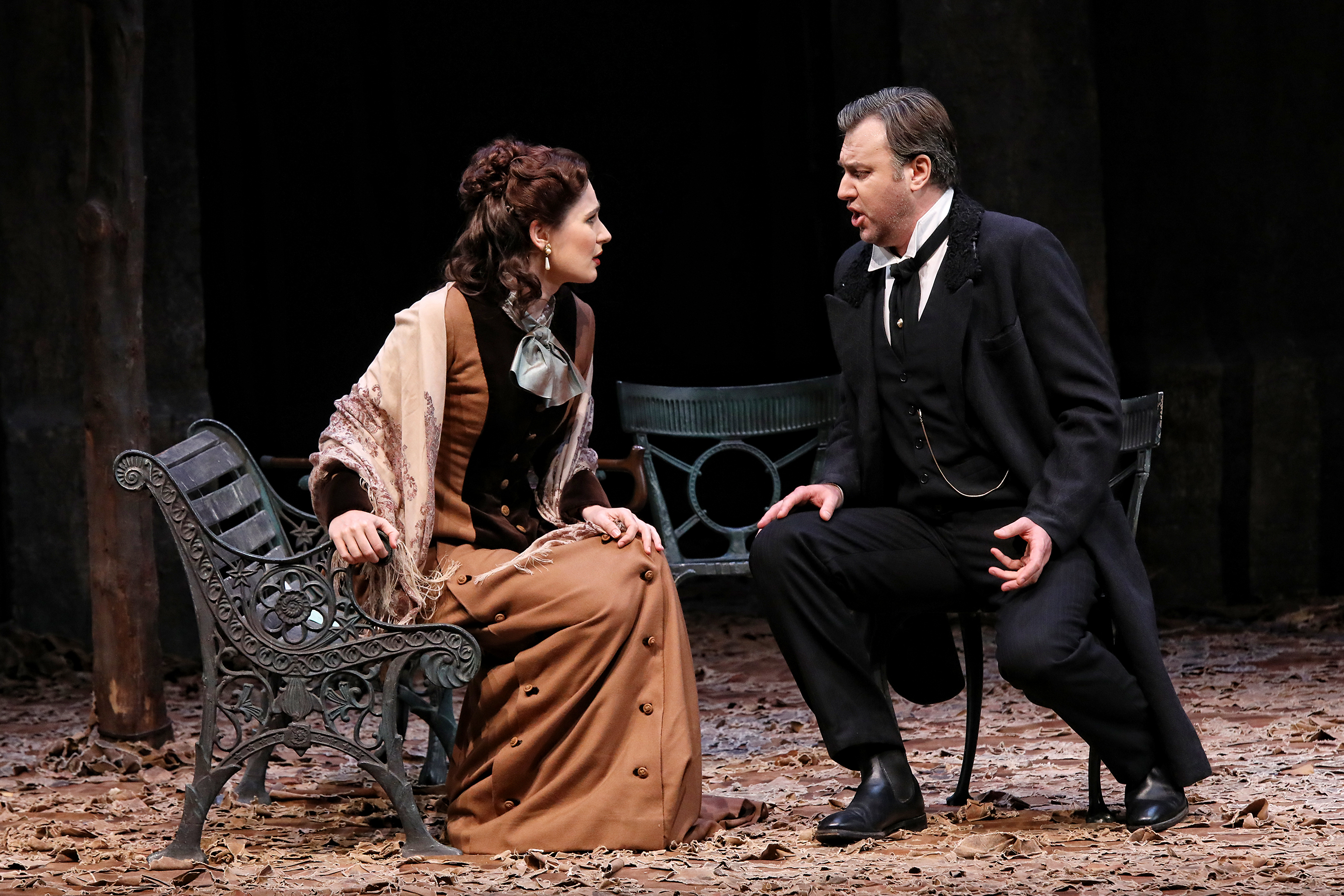
The entire Opera Australia Chorus is sensational, as always, and there are a number of particularly large choral outpourings in this opera that really show off their quality and power. Each of the lavish festive occasions in which the chorus of partygoers shines – the chorus of gypsy and matador revellers in the casino scene, for example – is juxtaposed with intimate, devastating moments for Violetta and the development of the main storyline, resulting in an increasing irony and terrific tension. Right up until the final scene in which Violetta is dying, there is a last interjection from the chorus as the sounds of carnival are heard from the street outside.
The Opera Australia Orchestra plays Verdi’s music exquisitely. Verdi wrote beautiful melodies of exceptional lyricism, reminiscent of Chopin, and pared back accompaniment figures that are almost Mozartean. There are multiple moments in which solo violins, solo oboes, clarinets or cellos get the chance to delineate their simple, emotive melodies with mellow, plaintive reflection, minus distraction or competition.
Mention must be made of the decadent period costumes and four different set designs, as vivid and detailed as a 19th century impressionist painting. There is a reason why this production keeps coming back, being revived by different directors since its’ Sydney premiere in 1994.
La Traviata is undeniably a paragon of opera, due to its’ classic storyline, realistic characterisation and above all, its’ masterful score. This particular production is a feast for the eyes and ears. A true triumph.
– Alicia Tripp
Alicia Tripp is a seasoned arts and music critic, as a former journalist for the ABC’s Limelight and State of the Arts magazines. She has a degree in Media & Communications, English and Music from the University of Sydney. As a pianist, ballerina and polylinguist, reviewing Sydney’s premiere concerts, operas, ballets and stage shows allows her to combine her passion for music, dance and the written word.
La Traviata is showing at The Joan Sutherland Theatre, Sydney Opera House, until March 27. Purchase tickets now. The venue is accessible.
Disclaimer: Alicia Tripp was an invited guest of Opera Australia
Photo credit: Prudence Upton

